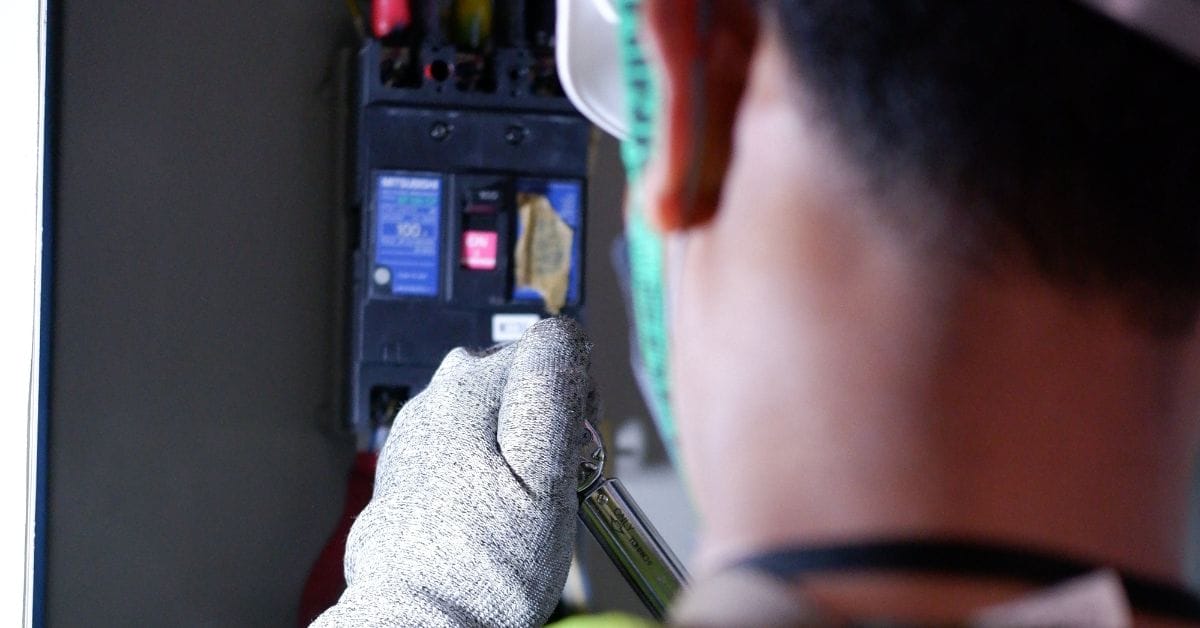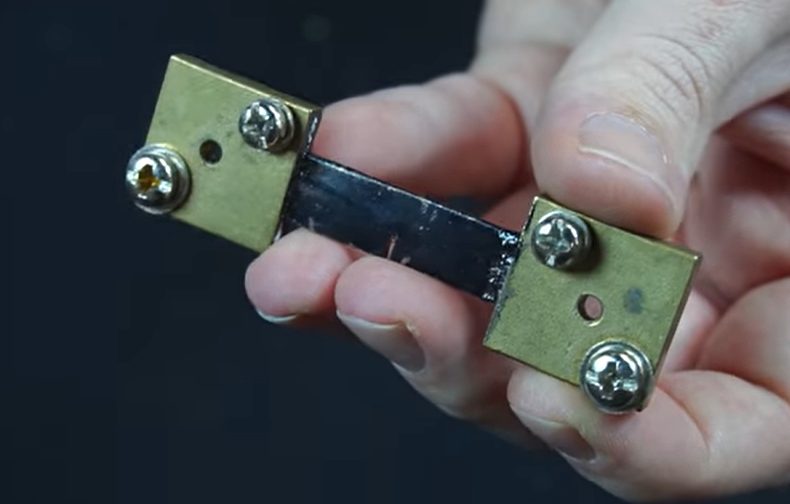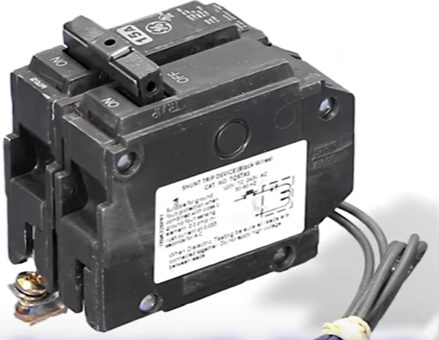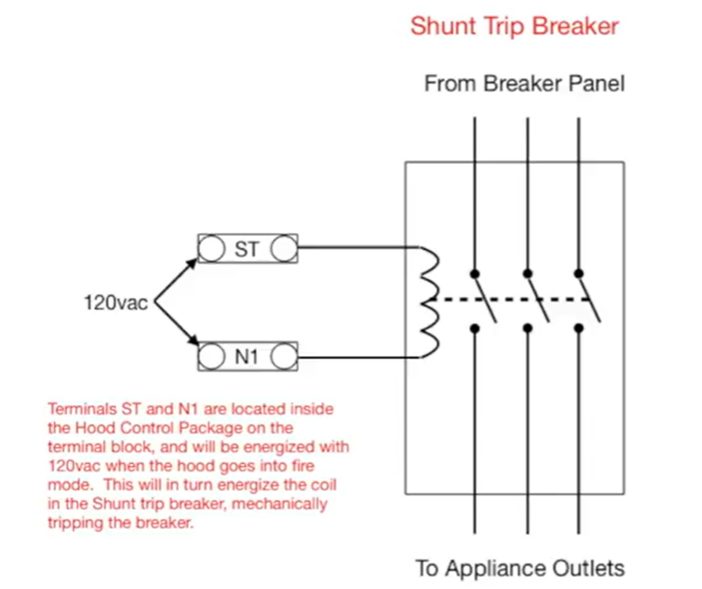How Does a Shunt Trip Breaker Work? (Guide)

Ever wondered what magic lies behind the walls of your home, keeping you safe from electrical mishaps? I’m here to illuminate one of those silent heroes: the shunt trip breaker.
Shunt trip breakers, which are key in electrical safety, offer manual and automatic tripping. Manually, they’re triggered by a button or switch for immediate circuit interruption. Automatically, they respond to signals from fire alarms or gas detectors, breaking the circuit instantly and ensuring safety in homes and businesses.
Stay tuned as I dive deeper into how these fantastic devices work. Trust me, it’s pretty cool stuff!
Understanding Shunt Trip Breakers
Shunt trip breakers are your home’s first defense against electrical fires. They have a simple yet critical job: cutting off power when things get dicey. It’s like having a vigilant firefighter on duty, ready to shut things down when a hazard is detected.

Let’s talk nuts and bolts. The shunt trip breaker is connected to a coil. An electrical current zips through this coil when an emergency switch is triggered, say from a gas detector or fire alarm. The kicker? This current activates the shunt trip mechanism, which trips the breaker.
What’s fascinating is the versatility of the shunt trip breaker. They’re not just for your homes. You’ll find them in commercial buildings, industrial settings, and places with high safety standards – basically, anywhere that can’t afford a catastrophe. They’re there, silently guarding against the unseen threats within our walls.
The Basic Mechanism of Shunt Trip Breakers

Shunt trip breakers have a simple yet genius job. They shut down electricity flow when an instant danger is detected. This isn’t just any off switch, though—it’s a complex dance between components that ensure your safety.
Imagine an emergency switch, like the red button in a spy movie. When that’s hit, it sends a signal to the shunt trip, activating the trip coil. This is the heartbeat of the operation, and the coil generates a magnetic force that thrusts the breaker’s trip mechanism.
Here’s the cool part. The trip mechanism isn’t just some metal spring—it’s precision-engineered to flip the breaker from “on” to “off” faster than you can blink. This speed is crucial, as even milliseconds can distinguish between a scare and a disaster.
Inside the breaker, you have contact points that conduct electricity when the switch is closed. When the trip coil is energized, it forcefully pulls down the tripping bar. This action causes the contacts to separate, immediately stopping the flow of electricity.
But let’s not forget the brains of the operation—the auxiliary circuit, which is wired to various safety and monitoring controls. It could be anything from smoke detectors to overload sensors, depending on what kind of ninja skills you need.
So there you have it. Shunt trip breakers are like your building’s personal electric bodyguard. They’re watching, ready to leap into action with their simple yet powerful mechanism, keeping you safe from the specter of electrical harm. Isn’t technology awesome?
Operational Modes: Manual and Automatic Tripping
When we’re talking about how shunt trip breakers operate, imagine them as the superheroes of electrical safety. They’ve got dual modes—manual and automatic—that provide versatility and responsiveness in protecting circuits.
Manual Tripping

Manual control is a big win if I see something fishy or need to cut power for maintenance. I’d march over to the breaker panel, find the shunt trip breaker, and give it a command—usually a simple button press or switch flip.
This manual action activates the shunt trip mechanism, swiftly interrupting the circuit. It’s immediate and deliberate, like hitting the brakes on your car before a red light.
Automatic Tripping

On the flip side, automatic tripping is where these clever devices show their tech-savvy muscle. They’re hooked up to control systems constantly scanning for trouble—smoke, gas, or an emergency situation.
So when a connected fire alarm or gas detector goes off with an “Uh-oh!”, it sends a signal right over to the shunt trip breaker to trip. It breaks the circuit in a heartbeat, preventing potential disasters without waiting for a human to intervene.
And don’t forget, since shunt trip breakers are part of an interconnected safety network, they’re always on guard, ready to respond to various hazardous conditions.
That means peace of mind for homes, businesses, and industrial settings alike, as they rely on these smart devices to take action when every second counts.
Coordination with other safety measures makes shunt trip breakers invaluable. They’re like the linchpin in a complex safety strategy designed to protect equipment and, more importantly, human lives by cutting off power at the first sign of trouble.
Common Applications of Shunt Trip Breakers

As I’ve been diving into the world of electrical safety, I’ve noticed that shunt trip breakers shine in various settings, and it’s not just about turning off power.
These devices have a knack for making places safer and more efficient. So, let’s talk about where you’ll commonly find these bad boys in action.
- Commercial Kitchens: Shunt trip breakers quickly cut off power in emergencies like fires for immediate response in bustling kitchen environments.
- High-Rise Offices: Shunt trip breakers are crucial for emergency evacuation plans in these complex electrical systems, shutting down power to specific areas as needed.
- Industrial Settings: Linked to emergency stop buttons, shunt trip breakers in industrial plants protect workers by rapidly disconnecting power in hazardous situations.
- Hospitals and Schools: In these critical community institutions, shunt trip breakers provide an additional safety layer, managing electrical systems against threats like gas leaks.
Tell you what, these breakers have found their niche in any place where safety is the top priority. Their automatic response to danger signals means faster, smarter protection, which everyone can get behind.
Comparative Analysis: Shunt Trip Breakers vs. Standard Circuit Breakers
Let’s dive into the circuit breakers world and see what sets shunt trip breakers apart from their standard counterparts. I’ve worked with both types and seen how they function in different scenarios firsthand. Here’s a breakdown to give you a clearer picture:
| Feature | Shunt Trip Breaker | Standard Circuit Breaker |
|---|---|---|
| Functionality | It is equipped with a shunt trip to allow remote tripping. It is ideal in emergency situations, like in kitchens or industrial areas. | Basic protection against overcurrent and short circuits. It trips when there’s an overload or a fault. |
| Use Case | I’ve seen these in action in commercial kitchens and industrial settings. They’re a lifesaver when you need to cut power remotely – in case of a fire. | Standard breakers are your go-to in residential and basic commercial setups. They’re the unsung heroes in our homes, keeping things safe day in and day out. |
| Complexity | It is a bit more complex due to the additional shunt trip mechanism. Requires a control signal for operation. | Simpler in design. They’re set and forget, doing their job quietly without needing extra input. |
| Cost | Generally, it is more expensive due to the added functionality and safety features. | More affordable. They do the basic job without the bells and whistles, which keeps the cost down. |
| Installation | Installation can be tricky with the extra wiring for the shunt trip. I remember this one time I had to carefully connect it to the fire alarm system in a restaurant. | Straightforward installation. It’s usually a quick job to swap these out or put them in. |
| Maintenance | Requires regular checks to ensure the shunt mechanism is functioning properly, especially in high-risk areas. | Low maintenance. Once they’re in, they rarely need attention unless there’s an issue. |
| Emergency Response | Superior in emergencies. It can be linked to fire alarms or other safety systems for immediate action. | No remote tripping capability. In an emergency, you need to be there physically to trip it. |
It’s all about choosing the right tool for the job, and hopefully, this comparison helps you do just that!
Troubleshooting Guide: Solving Common Shunt Trip Breaker Issues
Let’s get our hands dirty and tackle some common issues you might encounter with shunt trip breakers. Through my experiences, I’ve picked up some tricks to save you a headache or two.
Here’s a practical guide to help you troubleshoot:
- Shunt Trip Breaker Not Tripping
- Check the Control Circuit: Ensure the control circuit is properly wired and powered. A loose wire or incorrect voltage can prevent the breaker from tripping.
- Test the Shunt Trip Coil: A multimeter will check the shunt trip coil. If it’s defective, it needs replacing.
- Nuisance Tripping
- Examine External Controls: If it’s tripping randomly, look into any connected control systems, like fire alarms. Sometimes, a false alarm can trigger the breaker.
- Inspect for Overloading: Overloading circuits can cause frequent tripping. Check if the circuit is overloaded and redistribute the load if necessary.
- Breaker Won’t Reset
- Check for Continuous Faults: If it doesn’t reset, there might still be a fault in the system. Ensure all issues like short circuits or overloads are fixed.
- Inspect the Mechanism: Sometimes, the mechanical parts can jam. A gentle nudge can help, but it might need professional attention if it’s stuck.
- Electrical Surges
- Surge Protection: Shunt trip breakers aren’t immune to surges. Consider installing surge protectors to prevent damage to the breaker and connected devices.
- Aged or Damaged Breakers
- Regular Inspection: Like any equipment, shunt trip breakers can wear out. If it’s old or shows signs of damage, it’s time for a replacement.
If you’re unsure or the problem seems complex, it’s best to call a professional. Keeping your shunt trip breakers in top shape is key to ensuring they work when you need them most.
References
Organizations:
- National Fire Protection Association (NFPA). https://www.nfpa.org/en
- International Electrotechnical Commission (IEC). https://www.iec.ch/homepage
- Underwriters Laboratories (UL). https://www.ul.com/solutions
Books:
- “Electrical Safety Handbook” by John Cadick, Mary Capelli-Schellpfeffer, Dennis K. Neitzel, and Al Winfield. https://www.barnesandnoble.com/w/electrical-safety-handbook-4th-edition-mary-capelli-schellpfeffer/1127944053
Website Resources:
- Mike Holt’s Electrical Education. https://www.mikeholt.com/
- Electrician Talk. https://www.electriciantalk.com/
Video References:
Electrician U
Schematix
CASService
T & C Junction
Jr Electric School
